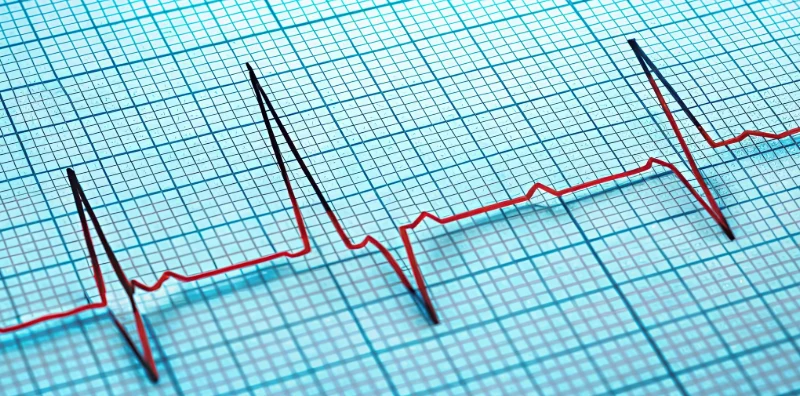There is no doubt that obesity is on the rise. But why? Is it because we are not exercising enough? Or are we simply overeating? Obviously, both are contributors, but to what extent? Today, we have some science to answer that question (1). Only about 10% of the increase in obesity can be attributed to decreased exercise, whereas about 90% is due to increased calorie consumption. As to why, we have to take a deeper dive into metabolism.
Metabolism is what keeps you alive. You need enough dietary calories to generate the energy that allows your metabolism to function effectively. But once you consume more than your body needs, the excess is stored as fat for future energy use. For most of us, that time when those stored calories are needed never comes.
The number of calories you actually need to survive and thrive is determined by your lean body mass, which is your total body weight minus your fat mass. Typical markers of obesity, such as BMI measurements, do not provide this necessary information, but measuring your lean body mass does. This is why obesity is medically defined as your percentage of body fat. If you are male, and your percent body fat is greater than 25 percent, or female with a percent body fat of greater than 35 percent, then you are considered to be obese. Using this marker to measure obesity, rates in the US in 2008 were nearly double those estimated from using BMI (2). Since then, BMI-defined obesity has continued to climb, rising 26% between 2008 and 2020 (3).
If much of this increased obesity comes from increased calorie consumption, then the obvious answer is to eat less. That’s easier said than done if you are constantly hungry. The new generation of GLP-1-based weight loss drugs is definitely not the answer, since the data indicates people using them to lose weight have about 40% of their weight loss coming from lean body mass (4). The loss of lean body mass means your metabolism slows and becomes less efficient. Furthermore, once the drugs are stopped, the weight returns (5). It is likely this increased weight is coming from increased body fat, suggesting that once you stop the GLP-1 drugs, you may actually become more obese than you originally were.
Is there an alternative? I believe there is. It’s the Zone diet. The Zone diet was not developed as a weight loss program, but as a patented treatment for conditions driven by insulin resistance (6). Such insulin-resistant conditions include obesity, type 2 diabetes, heart disease, etc. The Zone diet works by activating the levels of AMPK in each of your 30 trillion cells, not only to burn fat faster but also to increase your metabolic efficiency, allowing you to gain lean body mass while losing excess body fat. This is the Holy Grail of weight loss. Clinical studies confirm that statement (7, 8, 9, 10).
So, if you want to lose excess body fat and gain lean body mass to live longer, following the Zone diet will contribute significantly to your success. Adding the other two dietary components of Metabolic Engineering®, which include sufficient intake of omega-3 fatty acids and polyphenols, will also increase AMPK activity. Yes, exercise is good because it also increases AMPK activity, but don’t have the tail wag the dog.

References
1. McGrosky A, Luke A, Arab L, Bedu-Addo K, et al. Database consortium. Energy expenditure and obesity across the economic spectrum. Proc Natl Acad Sci U S A. 122:e2420902122 (2025). doi: 10.1073/pnas.2420902122.
2. Romero-Corral A, Somers VK, Sierra-Johnson J, Thomas RJ, Collazo-Clavell ML, Korinek J, Allison TG, Batsis JA, Sert-Kuniyoshi FH, Lopez-Jimenez F. Accuracy of body mass index in diagnosing obesity in the adult general population. Int J Obes. 32:959-66 (2008). doi: 10.1038/ijo.2008.11.
3. Trust for America’s Health. The State of Obesity 2020. https://www.tfah.org/report-details/state-of-obesity 2020/#:~:text=The%20U.S.%20adult%20obesity%20rate%20stands%20at%2042.4%20percent%2C%20the,by%2026%20percent%20since%202008.
4. Wilding JPH, Batterham RL, Calanna S, Davies M, Van Gaal LF, Lingvay I, McGowan BM, Rosenstock J, Tran MTD, Wadden TA, Wharton S, Yokote K, Zeuthen N, Kushner RF. STEP 1 Study Group. Once-weekly semaglutide in adults with overweight or obesity. N Engl J Med. 384:989-1002 (2021). doi: 10.1056/NEJMoa2032183.
5. Wilding JPH, Batterham RL, Davies M, Van Gaal LF, Kandler K, Konakli K, Lingvay I, McGowan BM, Oral TK, Rosenstock J, Wadden TA Wharton S, Yokote K, Kushner RF. STEP 1 Study Group. Weight regain and cardiometabolic effects after withdrawal of semaglutide: The STEP 1 trial extension. Diabetes Obes Metab. 24:1553-1564 (2022). doi: 10.1111/dom.14725.
6. Sears, B. Method of and nutritional and pharmaceutical compositions for reduction of hyperinsulinemia. U.S. Patent No. 6,140,304 (2000)
7. Stentz FB, Brewer A, Wan J, Garber C, Daniels B, Sands C, Kitabchi AE. Remission of pre-diabetes to normal glucose tolerance in obese adults with high protein versus high carbohydrate diet: randomized control trial. BMJ Open Diabetes Res Care. 4: e000258 (2016). doi: 10.1136/bmjdrc-2016-000258.
8. Stentz FB, Mikhael A, Kineish O, Christman J, Sands C. High protein diet leads to prediabetes remission and positive changes in incretins and cardiovascular risk factors. Nutr Metab Cardiovasc Dis. 31:1227-1237 (2021). doi: 10.1016/j.numecd.2020.11.027.
9. Johnston CS, Sears B, Perry M, Knurick JR. Use of novel high-protein functional food products as part of a calorie-restricted diet to reduce insulin resistance and increase lean body mass in adults: A randomized controlled trial. Nutrients. 9:1182 (2017). doi: 10.3390/nu9111182.
10. Stentz FB, Lawson D, Tucker S, Christman J, Sands C. Decreased cardiovascular risk factors and inflammation with remission of type 2 diabetes in adults with obesity using a high protein diet: Randomized control trial. Obes Pillars. 4:100047 (2021). doi: 10.1016/j.obpill.2022.100047.




